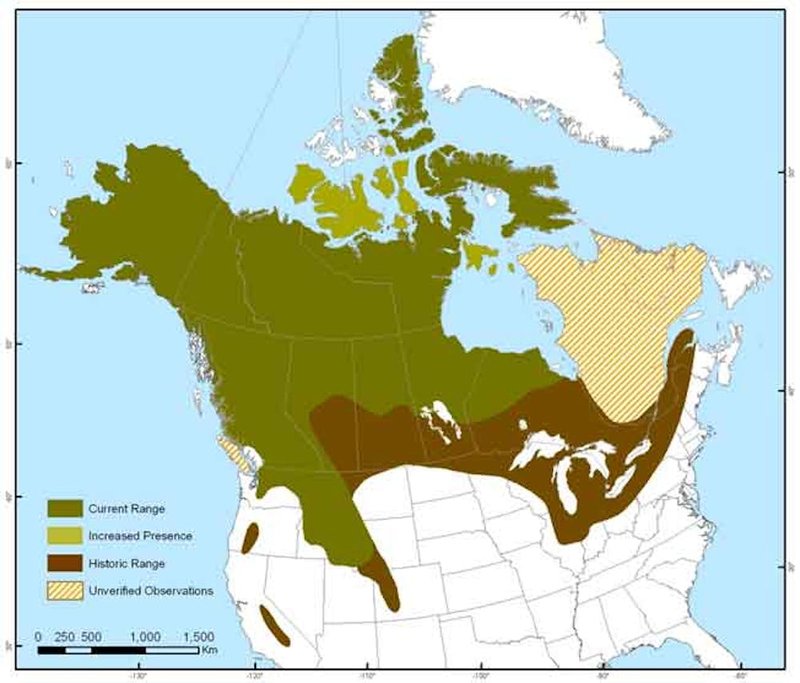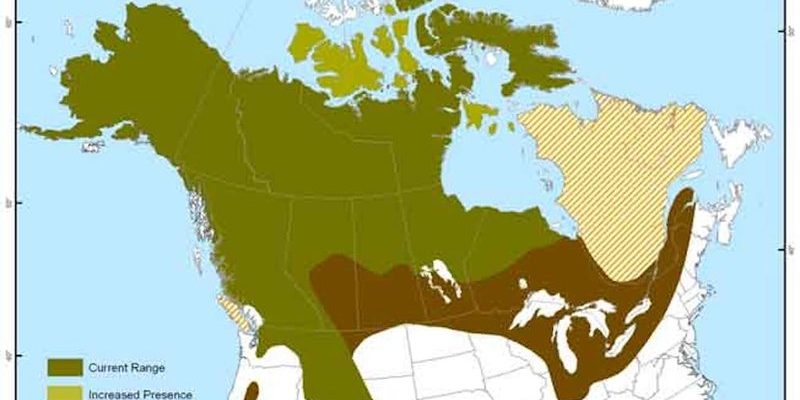
Wolverines are often found in remote, rugged regions, which can make them seem elusive and mysterious. You might compare their lifestyle to that of a mountain climber—preferring steep slopes and chilly air over bustling city streets. Understanding where these creatures live isn’t just about geography; it’s also about the ecosystems they inhabit. Their habitats are a tapestry of cold, dense forests, alpine tundra, and even boreal forests. In this article, we’ll break down the various places wolverines can be found, how their habitats influence their behavior, and what that means for their future.
Wolverine Habitat Overview
Wolverines thrive in some of the harshest climates on the planet. Their preferred habitats are typically **cold, snowy regions** that provide the perfect conditions for their survival. You might find them in areas where the temperature dips below freezing for months at a time. These tough little animals are well-adapted to harsh winters, thanks to their thick fur and a layer of fat that helps insulate them.
In many ways, a wolverine’s habitat is like a cozy home built for resilience. They need space to roam and find food, which usually consists of small mammals, carrion, and even the occasional deer or hare. Wolverines use their strong claws to dig through snow, hunting for buried food. Their home range can span **hundreds of miles**, allowing them to hunt and forage effectively.
Types of Habitats
Wolverines are found in several types of habitats, including:
- Boreal Forests: These forests are characterized by coniferous trees, like spruce and fir, and provide ample cover and food for wolverines.
- Tundra: In the alpine tundra, wolverines navigate rocky terrains and icy slopes, thriving in the cold, open spaces.
- Mountain Regions: High-elevation areas, often covered with snow year-round, serve as perfect hunting grounds for these agile animals.
Each of these habitats not only provides the food they need but also serves as a refuge from larger predators. It’s like they’ve carved out their own niche in the wild, bouncing between forests and mountains, always on the move.
Geographic Distribution of Wolverines
Wolverines are primarily found in the northern parts of the world. Their geographic distribution includes parts of North America, Europe, and Asia. In North America, they are commonly spotted in:
- Canada: Most notably in British Columbia and the Yukon, where the terrain is rugged and remote.
- Alaska: Home to many wolverines due to its vast wilderness and harsh climate.
- Northern Rocky Mountains: Populations can also be found in the western United States, including Montana and Idaho.
In Europe and Asia, wolverines inhabit regions like Scandinavia, the Ural Mountains, and parts of Siberia. Here’s the thing: while they might seem widespread, their populations are patchy, with isolated groups. This fragmentation can make it challenging for wolverines to find mates and maintain healthy populations.
Environmental Impact on Distribution
The **environment** plays a huge role in where wolverines can thrive. They prefer areas with deep snow, which helps them hunt for food and hide from larger predators. If you think about it, deep snow acts like a blanket, covering their tracks and making it harder for others to find them. However, climate change poses a real threat to their habitats. Warmer winters and less snowfall can significantly impact their hunting abilities and breeding success.
Another aspect to consider is human impact. As roads and urban development expand, wolverines lose their natural habitats. This can lead to more encounters with humans and increased mortality rates. It’s a tricky balance between protecting their environment and allowing for human growth.
Wolverine Behavior in Different Habitats
Now, let’s talk about how wolverines adapt their behavior based on their habitats. Picture a clever little survivor that knows how to make the most of its surroundings. In boreal forests, for instance, wolverines are fantastic climbers. They’ll scurry up trees to find food and evade threats. In contrast, in the tundra, they rely on their strength and stamina to traverse the open landscape, covering long distances for hunting.
Wolverines are also known to cache their food—a bit like a squirrel hoarding nuts. They’ll bury extra food beneath the snow to save for later. This behavior becomes essential during the harsh winter months when food is scarce. It’s like having a pantry stocked full of goodies, just waiting to be discovered!
Social Structure and Territory
In terms of social structure, wolverines are solitary creatures. Each wolverine has its territory, which can vary in size depending on the availability of food and habitat quality. They’ll actively defend their territory from other wolverines, often using scent markings to communicate their presence. It’s a fascinating aspect of their behavior—imagine a tiny superhero, patrolling its land and ensuring it stays safe from others.
This territorial nature can make finding mates challenging, especially in fragmented habitats. Though wolverines are generally solitary, they do come together during the mating season. The social dynamics of wolverines are complex and crucial for their survival, highlighting the importance of maintaining healthy ecosystems.
Conservation Challenges Facing Wolverines
As resilient as these animals are, they face several conservation challenges. Climate change is perhaps the most significant threat, impacting their habitat by altering snow patterns and temperatures. Without sufficient snowfall, wolverines struggle to find food, which can lead to population declines.
Additionally, habitat fragmentation due to human activity makes it harder for wolverines to roam freely. Fragmented habitats can lead to genetic bottlenecks, where small populations become isolated and can’t interbreed effectively. This can weaken the overall health of the population.
Another concern is overhunting and poaching. Despite their strength, wolverines are vulnerable to hunting, particularly in areas where they are regarded as pests. Maintaining a balance between human interests and wildlife conservation is crucial for ensuring these incredible animals continue to roam the wilderness.
The Future of Wolverines: What Lies Ahead?
Looking ahead, the future of wolverines will largely depend on effective conservation strategies. This includes protecting their habitats and creating corridors that allow them to move between different areas. It’s like building a bridge for these majestic creatures, ensuring they can continue to thrive despite the challenges they face.
Public awareness also plays a crucial role. The more people know about wolverines—their habits, their habitats, and the threats they face—the more they can advocate for their protection. For instance, supporting conservation efforts and sustainable land-use practices can help secure a future for wolverines. Every small action counts.
In conclusion, wolverines are more than just tough little critters; they’re amazing survivors adapted to some of the most extreme environments on Earth. By understanding their habitats and distribution, we can work to protect these fascinating animals and ensure they remain part of our world for generations to come.
So, the next time you think of wolverines, remember them as resilient warriors of the wild, fighting against the odds to carve out their unique place in nature.

